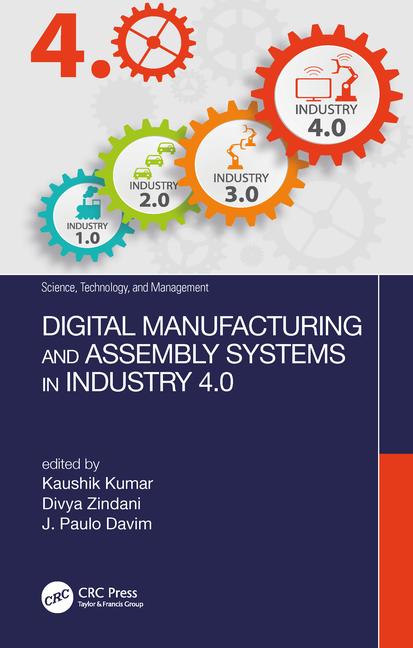Assembly In Action: RFID Tightens up Hydraulic Valve Assembly
Many of the 4,300 people who work at
Caterpillar’s heavy-equipment manufacturing plant in Gosselies, Belgium,
are assemblers who bolt together hydraulic valves and hoses before installing
them in medium- and large-sized excavators and wheel-loaders. Until recently, assemblers used a manual torque wrench to tighten the
bolts.
 Many of the 4,300 people who work at
Caterpillar’s heavy-equipment manufacturing plant in Gosselies, Belgium,
are assemblers who bolt together hydraulic valves and hoses before installing
them in medium- and large-sized excavators and wheel-loaders. The valves are
about the same size as a car engine; the hoses are made of reinforced
rubber or steel.
Many of the 4,300 people who work at
Caterpillar’s heavy-equipment manufacturing plant in Gosselies, Belgium,
are assemblers who bolt together hydraulic valves and hoses before installing
them in medium- and large-sized excavators and wheel-loaders. The valves are
about the same size as a car engine; the hoses are made of reinforced
rubber or steel.
Until recently, assemblers used a manual torque wrench to tighten the bolts, which require about 300 newton-meters of torque to be properly secured. Because reaching the proper torque depended on the assembler’s judgment, he would mark the parts with paint to help gauge the connection’s tightness.
“If those hydraulic hoses are not properly tightened, failure could result in leaking valves when the complete machine is assembled and tested,” says Benoit Degraux, project director at Caterpillar’s Gosselies plant.
Looking to reduce product failures, in late 2008 Caterpillar decided to implement an RFID-based real-time locating system (RTLS) that ensures assemblers applied the appropriate amount of torque. The system also had to ensure the assembler used the correct tool in the correct location.
Caterpillar developed the RTLS in conjunction with the Belgian industrial software firm De Jaeger Automation. The system consists of RFID interrogators and ultra-wideband RFID tags, provided by Ubisense, and Protrac software, provided by De Jaeger.
Eight RFID interrogators are mounted on the ceiling in Caterpillar’s production area where the main high-pressure hydraulic valves are assembled. RFID tags are mounted on six electronic torque wrenches, which replaced the manual models and are preset to a specified torque amount.
Each tag transmits a unique ID number for the wrench. This ID number is captured by the nearest interrogator and sent to the PC in the assembly area where the wrench is being used. Protrac software is run on the PC and tracks each part’s assembly, as well as who assembled it and when.
Before assembly, the worker inputs his identification number, then scans the machine part ID number with a bar-code scanner. The Protrac software links the part ID number to the location and identity of the torque wrench being used to ensure it is in the correct location.
If the wrong tool is in the wrong workstation, the computer screen displays an alert.
The color yellow means the tool is not at the correct assembly station and red signifies the worker’s PC has lost its network connection with the back-end server.
If the correct tool is in the correct workstation, the computer screen displays the color green, followed by assembly work procedures.
During assembly, when an operator applies the maximum amount of force preset for that valve, the wrench clicks to indicate that the hose is properly attached, and the measured torque is transmitted to the corresponding PC.
Degraux says most hydraulic valves and hoses are now being found to be properly assembled when tested. This has led to less rework on leaking valves discovered during the testing process.
For more information on real-time locating systems, call 720-249-4149 or visit www.ubisense.net.

By
placing an RFID tag on each wrench, Caterpillar ensures that the proper tool
and the correct amount of torque is used. Photo courtesy Ubisense
Until recently, assemblers used a manual torque wrench to tighten the bolts, which require about 300 newton-meters of torque to be properly secured. Because reaching the proper torque depended on the assembler’s judgment, he would mark the parts with paint to help gauge the connection’s tightness.
“If those hydraulic hoses are not properly tightened, failure could result in leaking valves when the complete machine is assembled and tested,” says Benoit Degraux, project director at Caterpillar’s Gosselies plant.
Looking to reduce product failures, in late 2008 Caterpillar decided to implement an RFID-based real-time locating system (RTLS) that ensures assemblers applied the appropriate amount of torque. The system also had to ensure the assembler used the correct tool in the correct location.
Caterpillar developed the RTLS in conjunction with the Belgian industrial software firm De Jaeger Automation. The system consists of RFID interrogators and ultra-wideband RFID tags, provided by Ubisense, and Protrac software, provided by De Jaeger.
Eight RFID interrogators are mounted on the ceiling in Caterpillar’s production area where the main high-pressure hydraulic valves are assembled. RFID tags are mounted on six electronic torque wrenches, which replaced the manual models and are preset to a specified torque amount.
Each tag transmits a unique ID number for the wrench. This ID number is captured by the nearest interrogator and sent to the PC in the assembly area where the wrench is being used. Protrac software is run on the PC and tracks each part’s assembly, as well as who assembled it and when.
Before assembly, the worker inputs his identification number, then scans the machine part ID number with a bar-code scanner. The Protrac software links the part ID number to the location and identity of the torque wrench being used to ensure it is in the correct location.
If the wrong tool is in the wrong workstation, the computer screen displays an alert.
The color yellow means the tool is not at the correct assembly station and red signifies the worker’s PC has lost its network connection with the back-end server.
If the correct tool is in the correct workstation, the computer screen displays the color green, followed by assembly work procedures.
During assembly, when an operator applies the maximum amount of force preset for that valve, the wrench clicks to indicate that the hose is properly attached, and the measured torque is transmitted to the corresponding PC.
Degraux says most hydraulic valves and hoses are now being found to be properly assembled when tested. This has led to less rework on leaking valves discovered during the testing process.
For more information on real-time locating systems, call 720-249-4149 or visit www.ubisense.net.
Looking for a reprint of this article?
From high-res PDFs to custom plaques, order your copy today!







